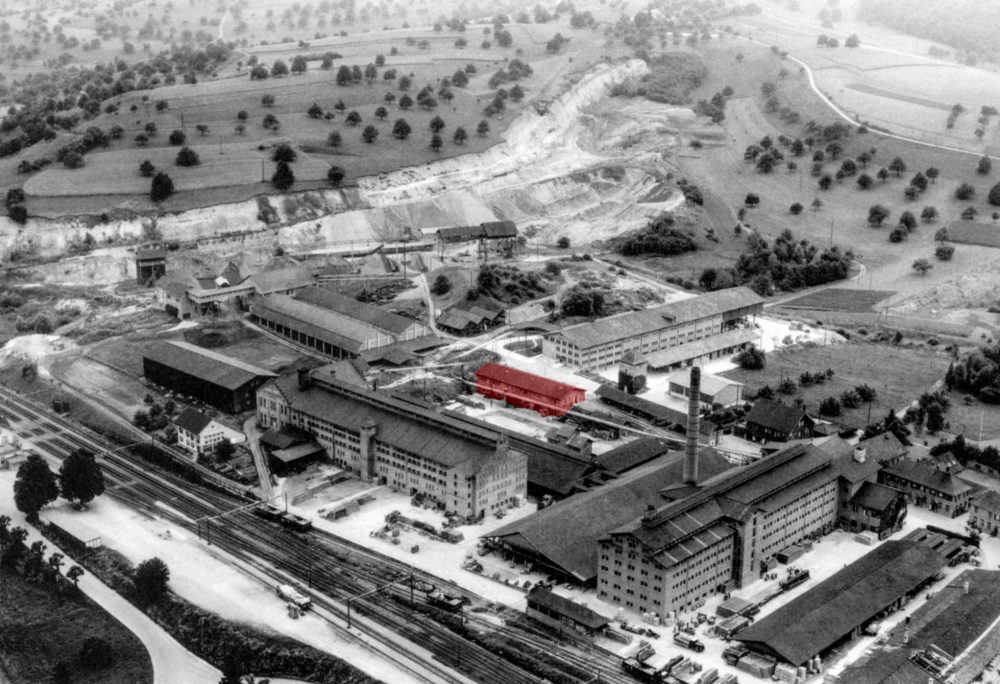
Tonwerke Keller AG, Frick roof tile factory, 1950s, with the art pottery buildings marked in red (from Ruetz, Bernhard, Vom Stein zum Haus: Die Geschichte der Keller Ziegeleien. Humlikon 2019, p. 84, modified).
Andreas Heege, 2020
Frick is a municipality in the Canton of Aargau with approximately 5,500 inhabitants, some 20 km north of Aarau.
Basic information about the company:
From 1906 Public limited company “Dachziegelwerk Frick”, construction of Plant I in 1907. Production of plain tiles, interlocking tiles and bricks.
Economic difficulties prior to 1914 are further exacerbated by the outbreak of the First World War.
1923 A family of tilers from Pfungen become the majority shareholders (Jakob Ulrich Keller and his sons, Franz and Hans Keller). Construction of Plant II from 1924/1925, the company is expanded and becomes an industrial tileworks and one of the most modern plants in Europe.
1935 A new Opalinus Clay pit is opened up in the “Chäsleten” area and a cable car is built between it and the factory premises. The years 1935 and 1936 are very difficult economically.
A modest in-house laboratory is set up in 1936 and is subsequently extended on an ongoing basis. Run by trained pottery personnel, its main function is quality control.
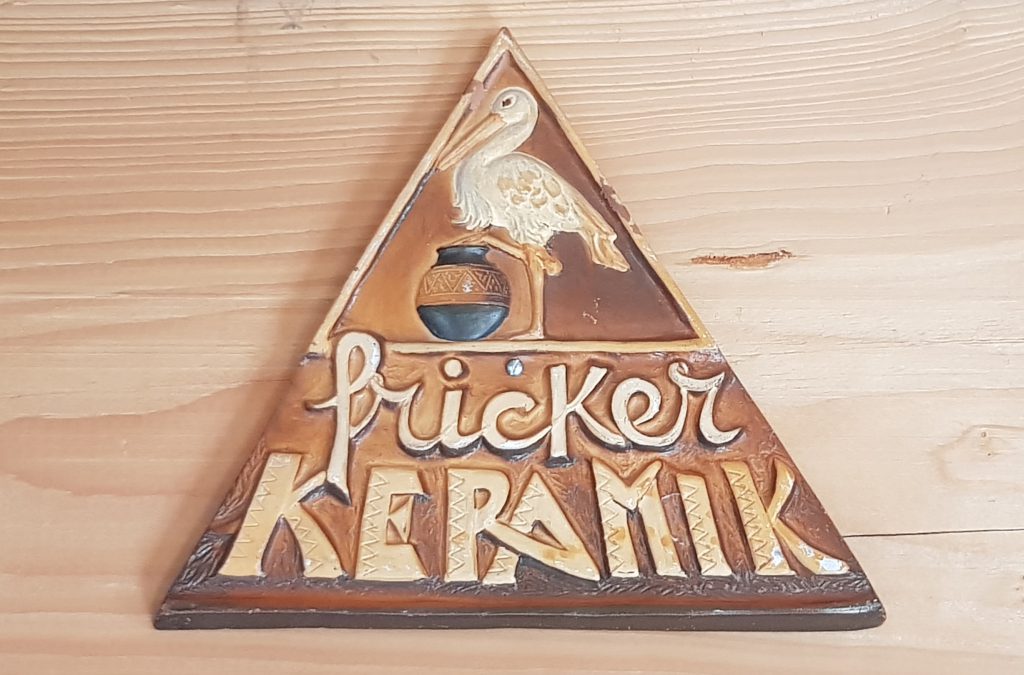
1938 The company acquires a German patent to produce Terra sigillata (a type of pottery of Roman origin with a fine red lustre slip), and an Art Pottery Department is set up. The first vessels are produced by the technical manager, Albert Picard.

1939 During the “Landi” (Swiss National Exhibition) a small workshop is fitted with an electric kiln and a first potter was hired. Besides vases and bowls, the workshop produces copies of Greek and Roman vessels, including amphorae, as well as individually inscribed pottery for associations and clubs.

Jug with chattered decoration and Terra sigillata slip from the early period of the Art Pottery Department between 1938 and 1950.
As a consequence of mobilisation in 1939 and throughout the Second World War, the factory is forced to cease production intermittently.
1941 The Art Pottery Department moves into a dedicated building with an area for preparing clay and several electric kilns and potters’ wheels. It has enough space for a staff of between 5 and 10 people.
1944 Plant I burns down and is rebuilt; a new ring kiln (a so-called Hoffmann kiln) is constructed in 1944/1945.
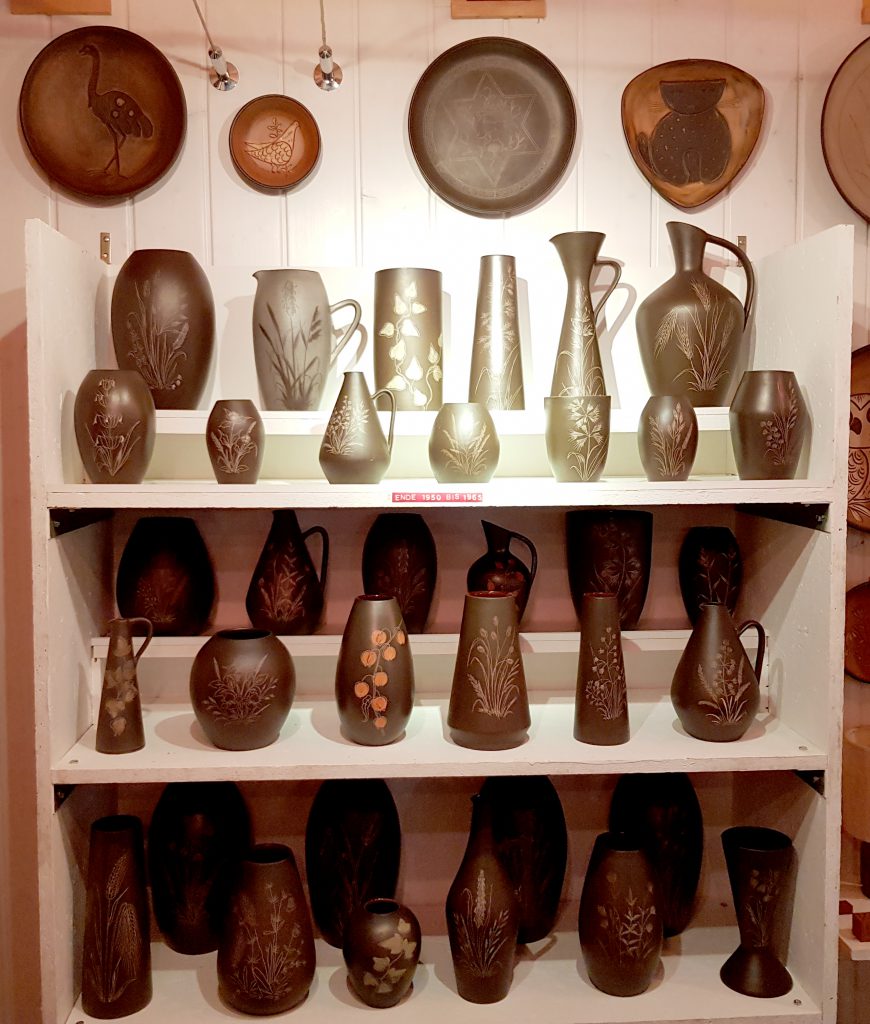
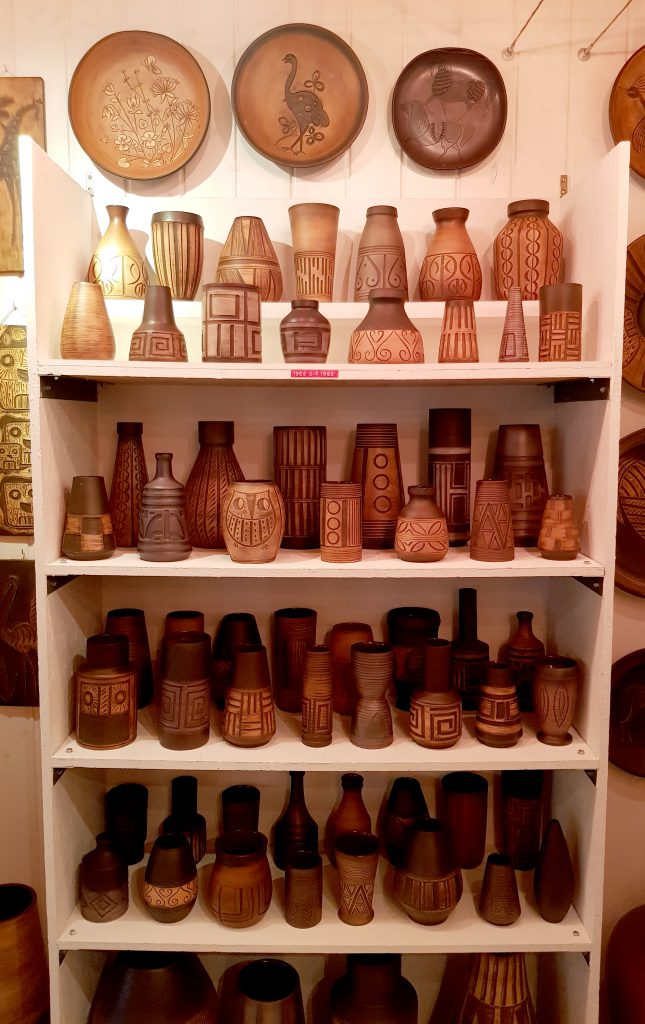
1954 Thanks to the post-war boom, Plant III is added.
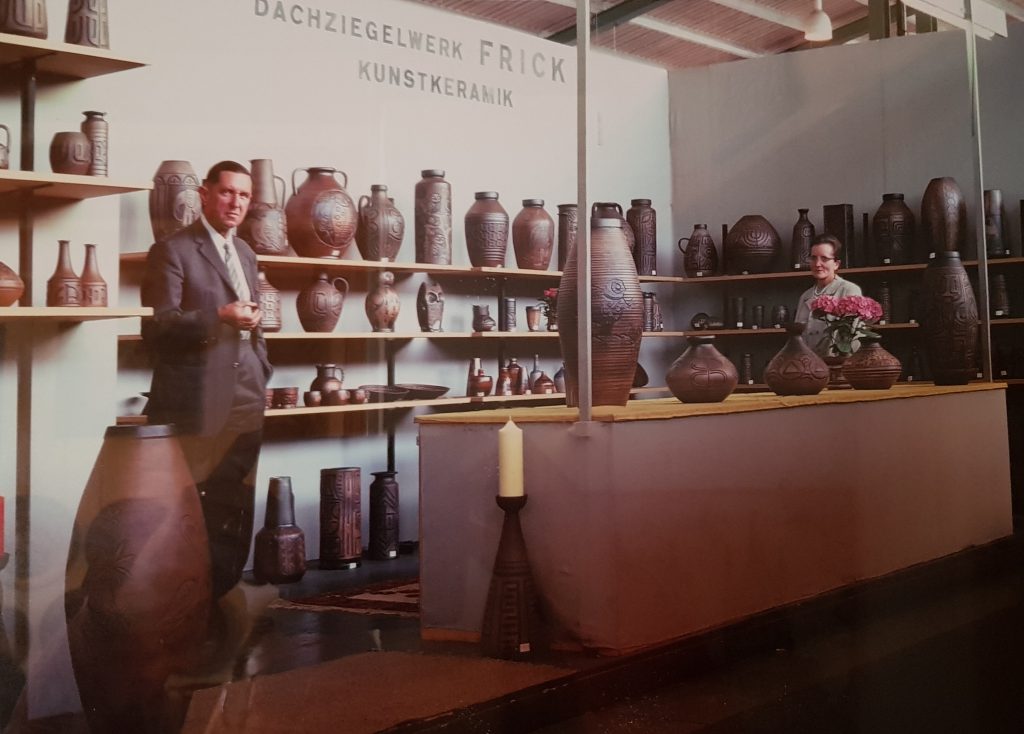
The Art Pottery Department presents its wares at several Mustermesse (MUBA) fairs in Basel.
1965 Plant II is demolished and rebuilt. The focus of production shifts to bricks.
1970 Plant I (rebuilt in 1944) is closed down and the company name is changed to “Tonwerke Keller AG”.
From 1975 difficult years with reduced working hours. From the early 1980s, however, the construction industry begins to recover, and the factory is modernised.
1983 The Art Pottery Department closes.
The company Tonwerke Keller AG still exists today and is thriving.
Films about the 1925 roof tile factory.
Translation Sandy Haemmerle
References:
Jegge 1928
Emil Jegge, Das Dachziegelwerk Frick, in: Vom Jura zum Schwarzwald, Blätter für Heimatkunde und Heimatschutz 3, 1928, 5-11.
Wälchli 1981
E. Wälchli, Gebrannte Erde im Kunsthandwerk. Die Kunstkeramik-Abteilung in Frick. Die Ziegelpresse, Hauszeitung der Keller AG Pfungen und der Tonwerke Keller AG Frick, Heft 8, 1981, 6-7.
Roth 1996
R. Roth, Entwicklung des Dachziegelwerkes Frick zum Tonwerk Keller Frick, in: Museumsverein Laufenburg, Hafner, Töpfer, Ziegelbrenner. Keramische Erzeugnisse im Wandel der Zeit, Laufenburg 1996, 43-53.
Ruetz 2019
Ruetz, Bernhard, Vom Stein zum Haus: Die Geschichte der Keller Ziegeleien. Humlikon 2019.

